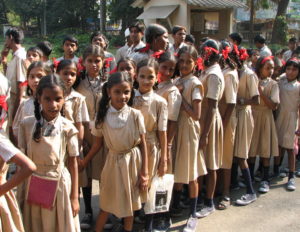
The literacy rate for women in India is 39% whereas 64% for men with less than 40%of the 330 million women aged seven and above is literate, according to 1991 census which calculates to around 200 million women are illiterate in India.
Illiterate women in rural areas show poor nutritional status, high level of fertility, less awareness of their rights, little autonomy in the household. Lack of education also has a negative effect on their children’s growing physically and mentally both ways. The main problems faced by girls in rural areas is that they must be enrolled in the school in the beginning of the year but they aren’t able to make it till the end, either they are forced to marry or told you aren’t meant for education rather help their mothers with a household. According to a survey in India, 3 out of 10 girls continue the schooling and promote to next class. These girls who are forced to marry at the age of 10 or 13 are the illiterate mothers, who would want to read and write but couldn’t after marriage. As they end up -having 5 to 6 children due to the unawareness of what family planning is, becoming a victim of domestic violence as they don’t know what their rights are or else helping their husbands in farms.
Many parents think educating their sons is an asset to the family whereas educating their daughter is a waste of money because she eventually will get married and will with her husband they won’t get any monetary benefit from her directly. Another belief of rural parents is if the daughter studies too much she would have higher demand and would want an educated better half which would mean greater expenses in her marriage. Very often if the parent is willing to educate their daughter the accessibility to a school becomes a problem and sending the girl away to a town alone is considered unsafe, many a times if the school is located in the village its infrastructure, the student-teacher ratio, no toilets for girls, inaccessibility to textbooks are the issues which come up.
There are certain schemes prevailed by the government like ‘Beti Bachao Beti Padhao’ scheme introduced by our Prime Minister. Though there is no relevance of such schemes if the community does not cooperate. There has to be changed in the mind of people to bring such social change. The progress of such schemes depends on the awareness spread and the implementation of the plan which requires the active participation of both the citizens and the government. India dreams of becoming a superpower by 2020 but with the literacy rate of an underdeveloped country, it isn’t possible. All of this work just requires equality and cooperation then we are no away from becoming the most literate country in the world.
“Let us pick up our books and pencils.
They are the most powerful weapons.”
– Malala Yousafzai
